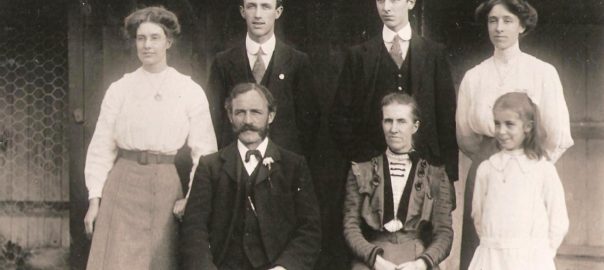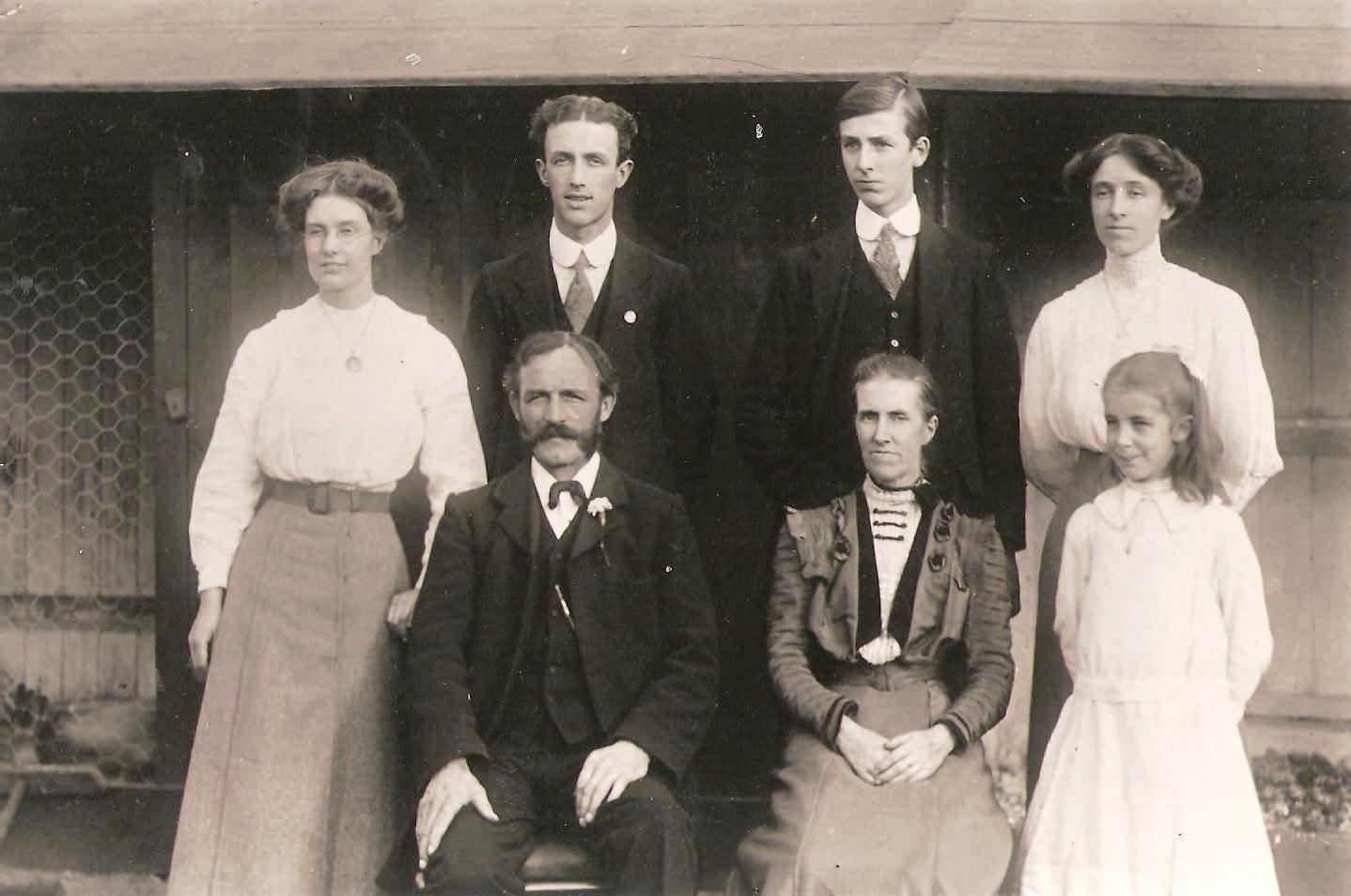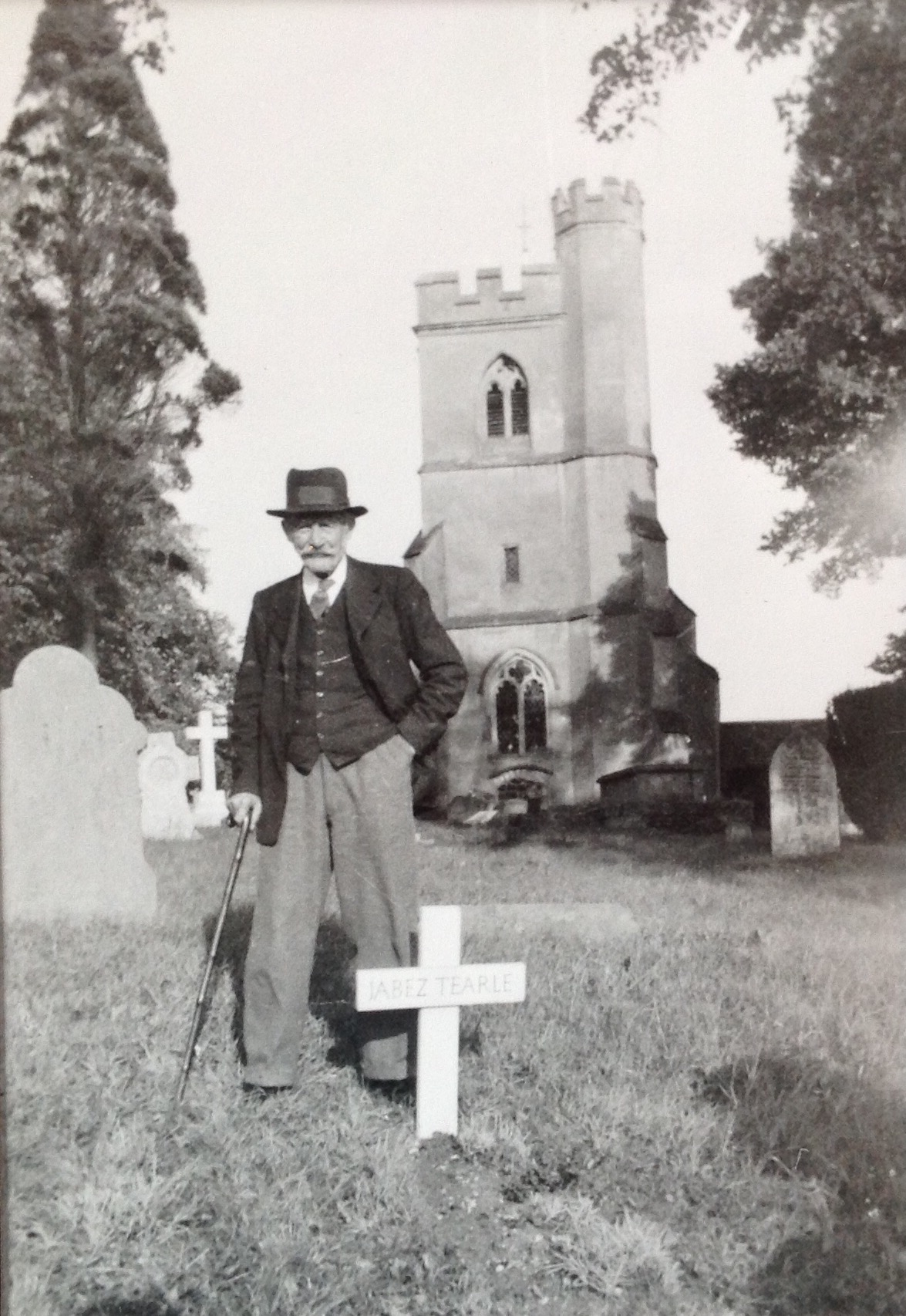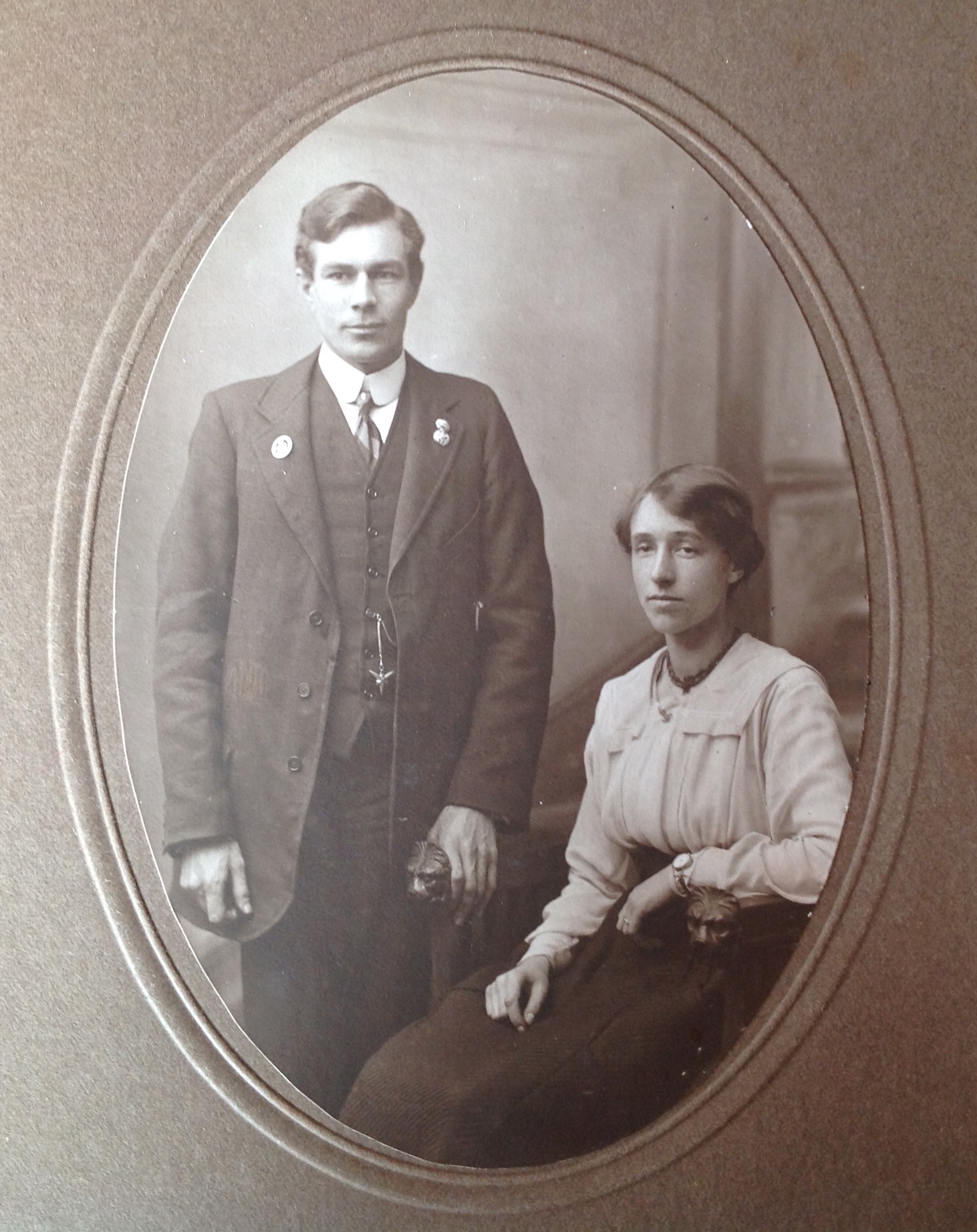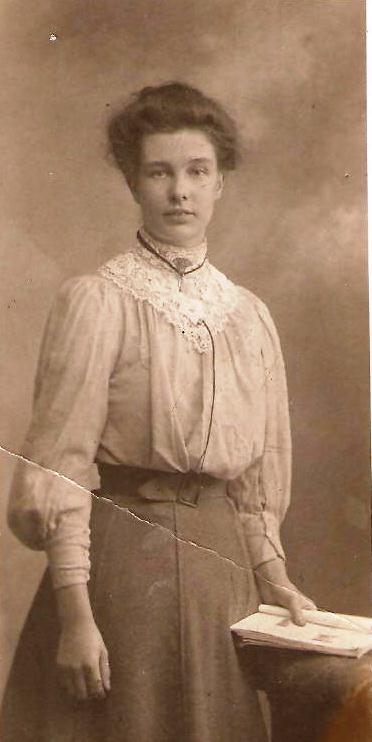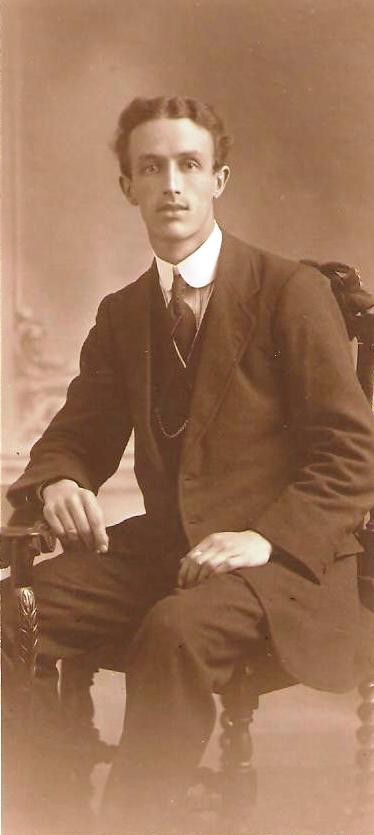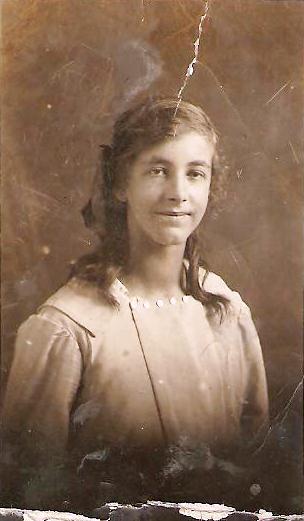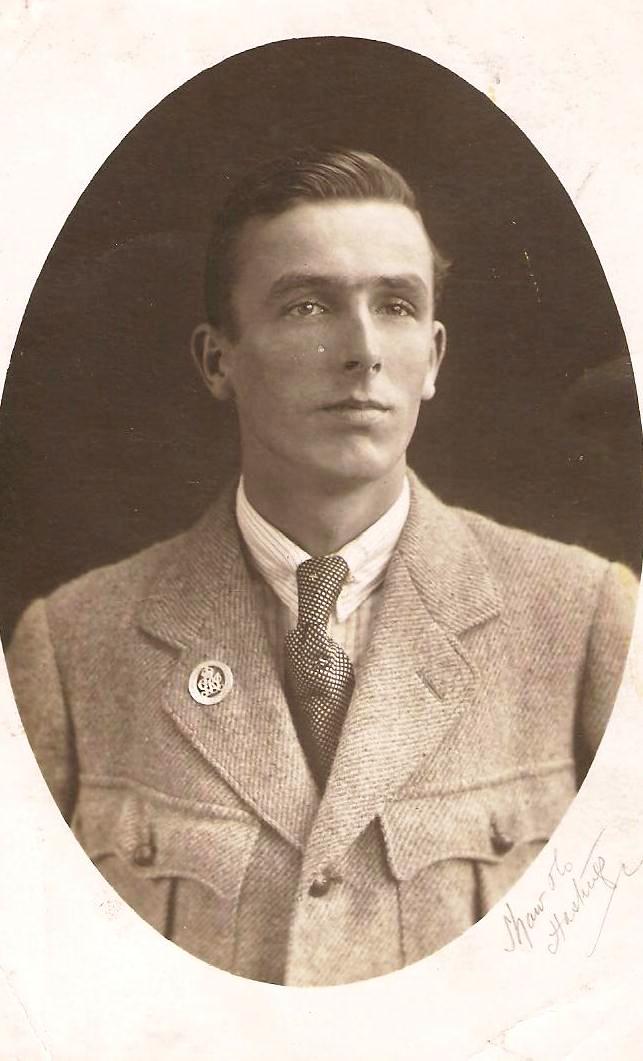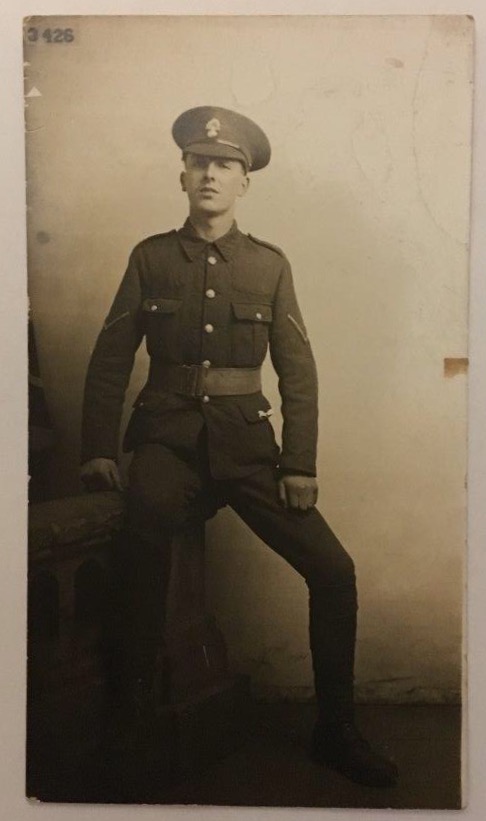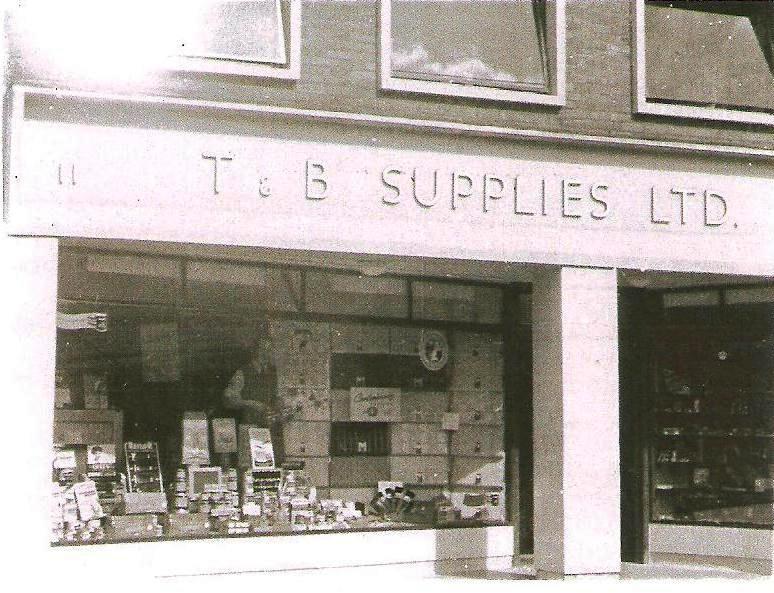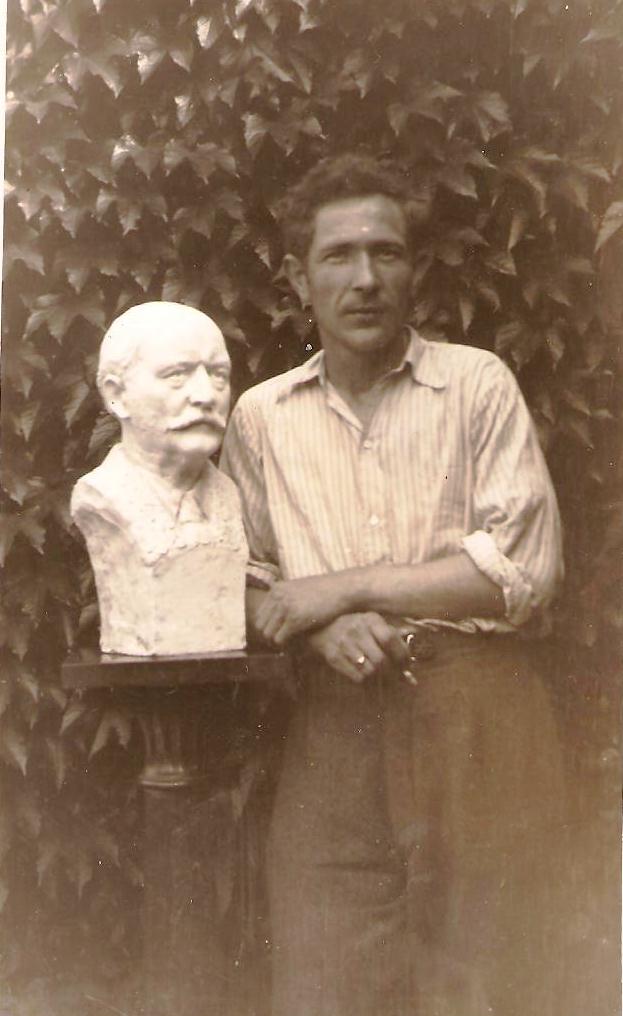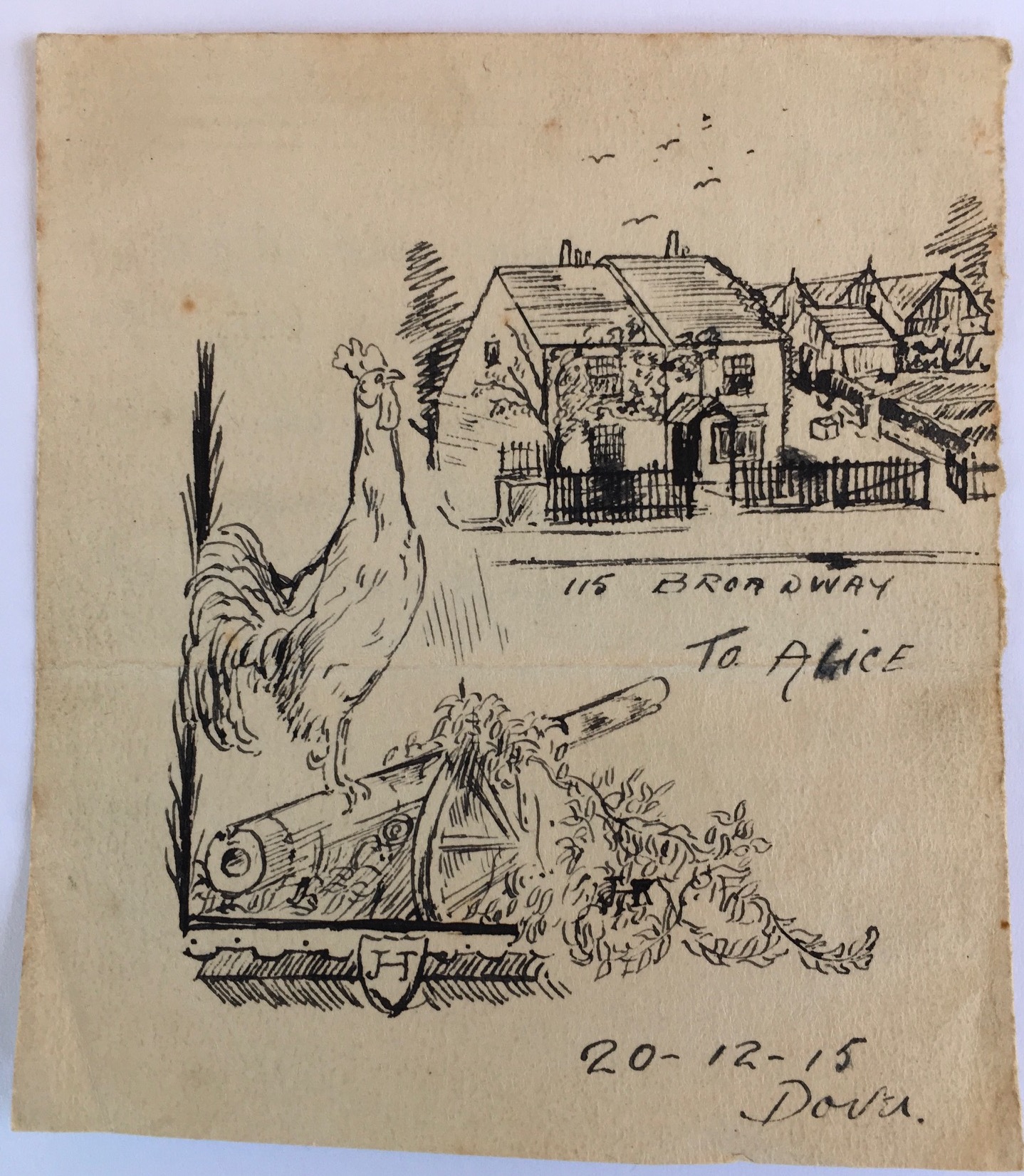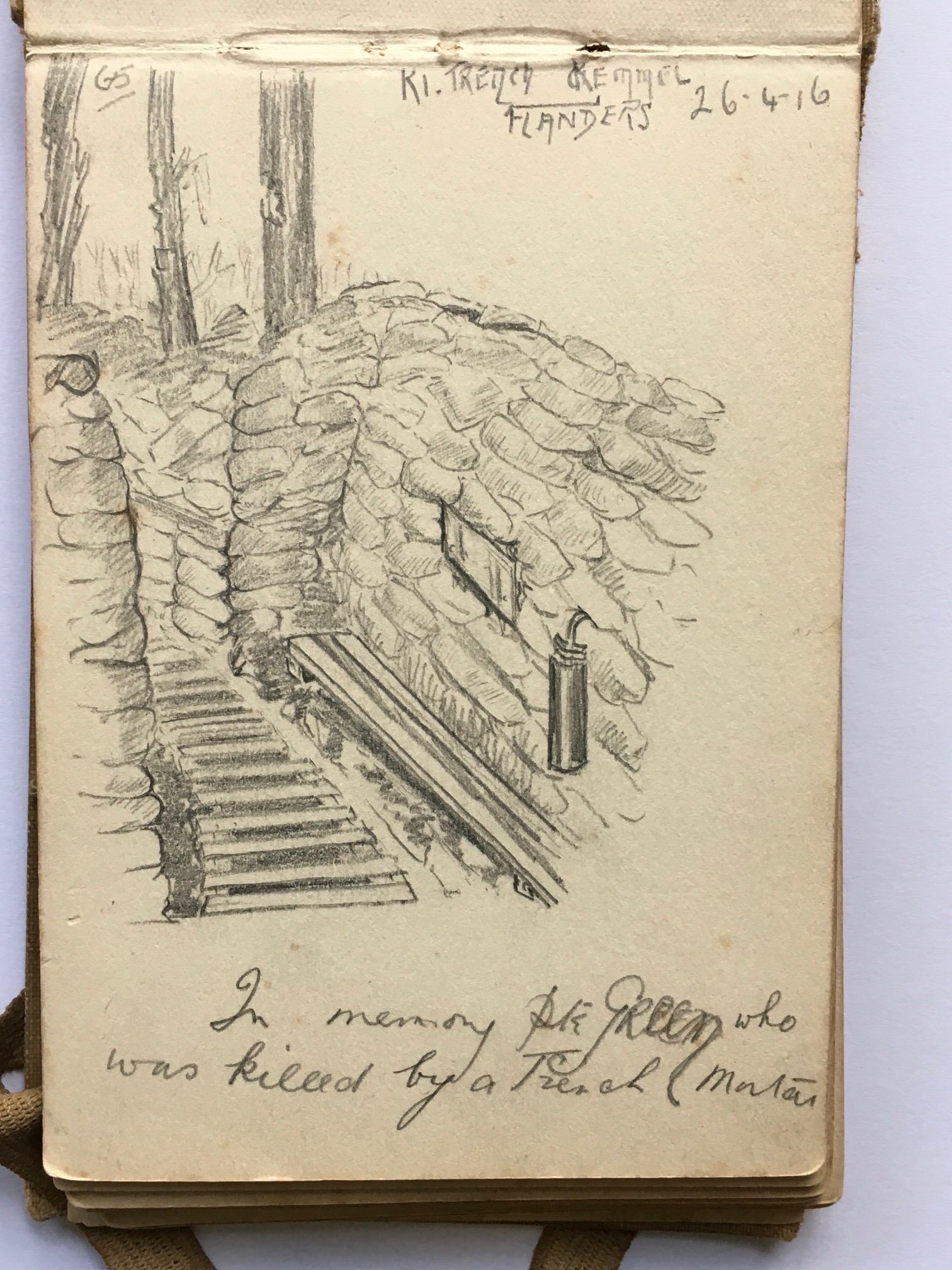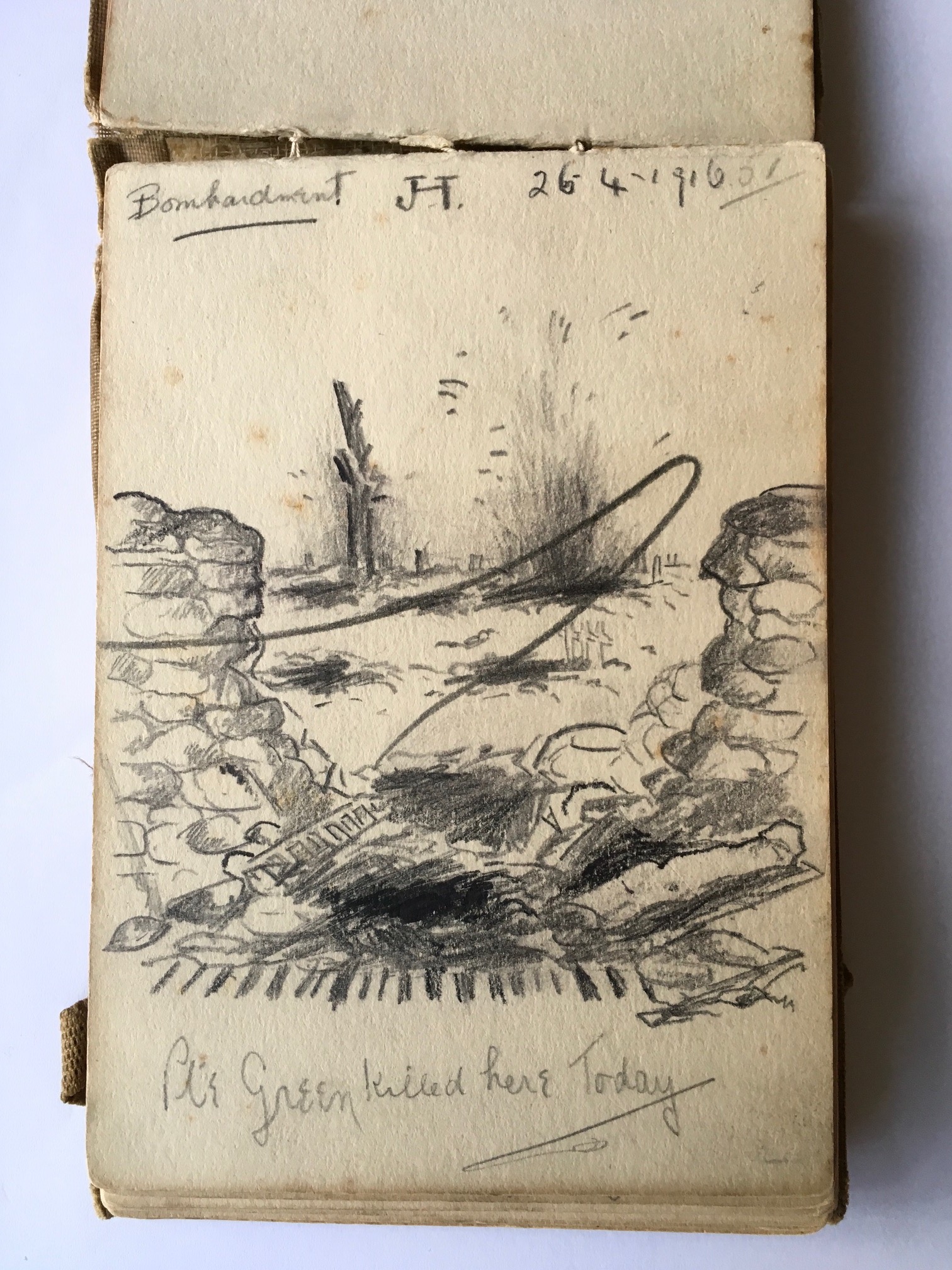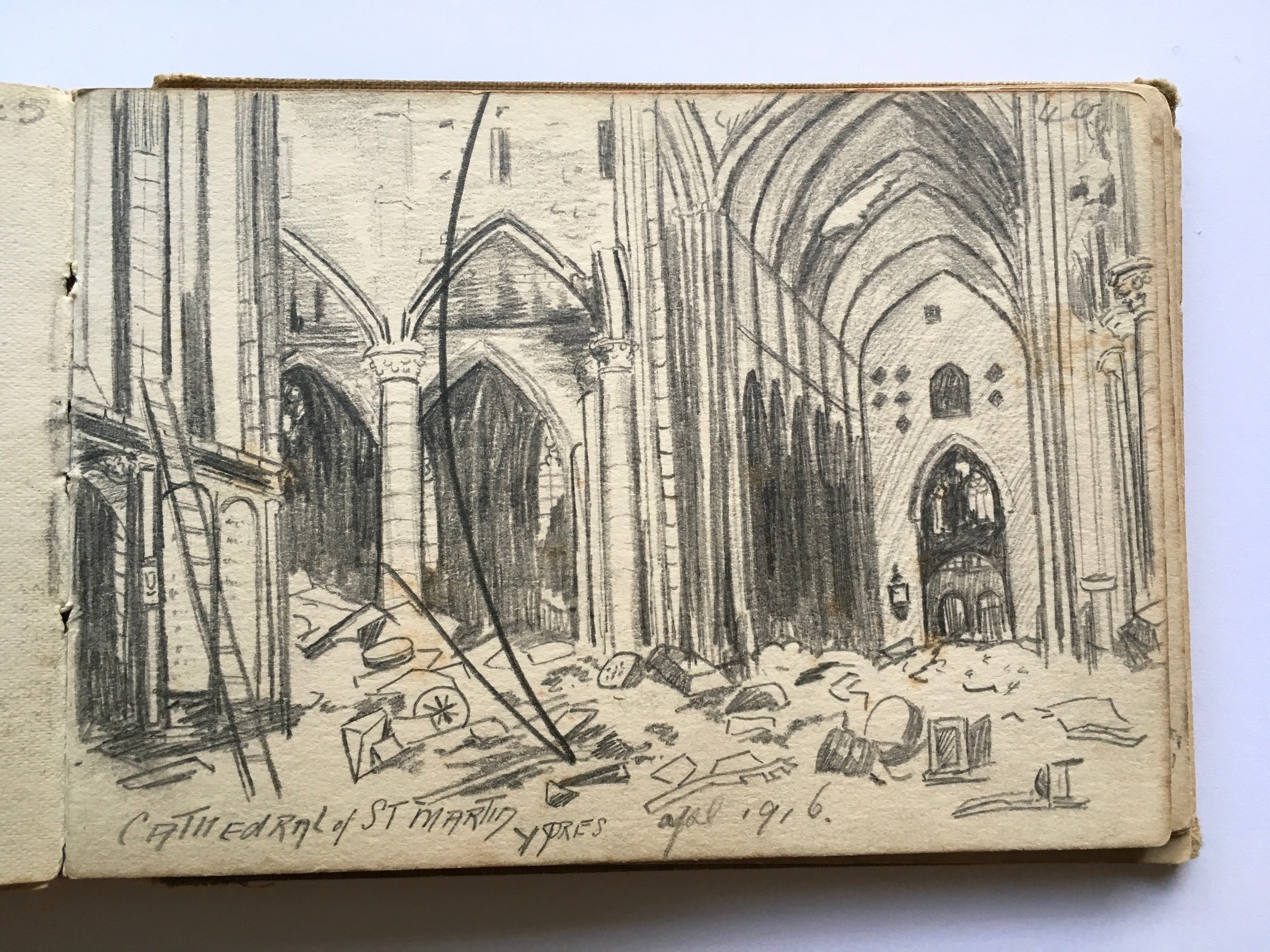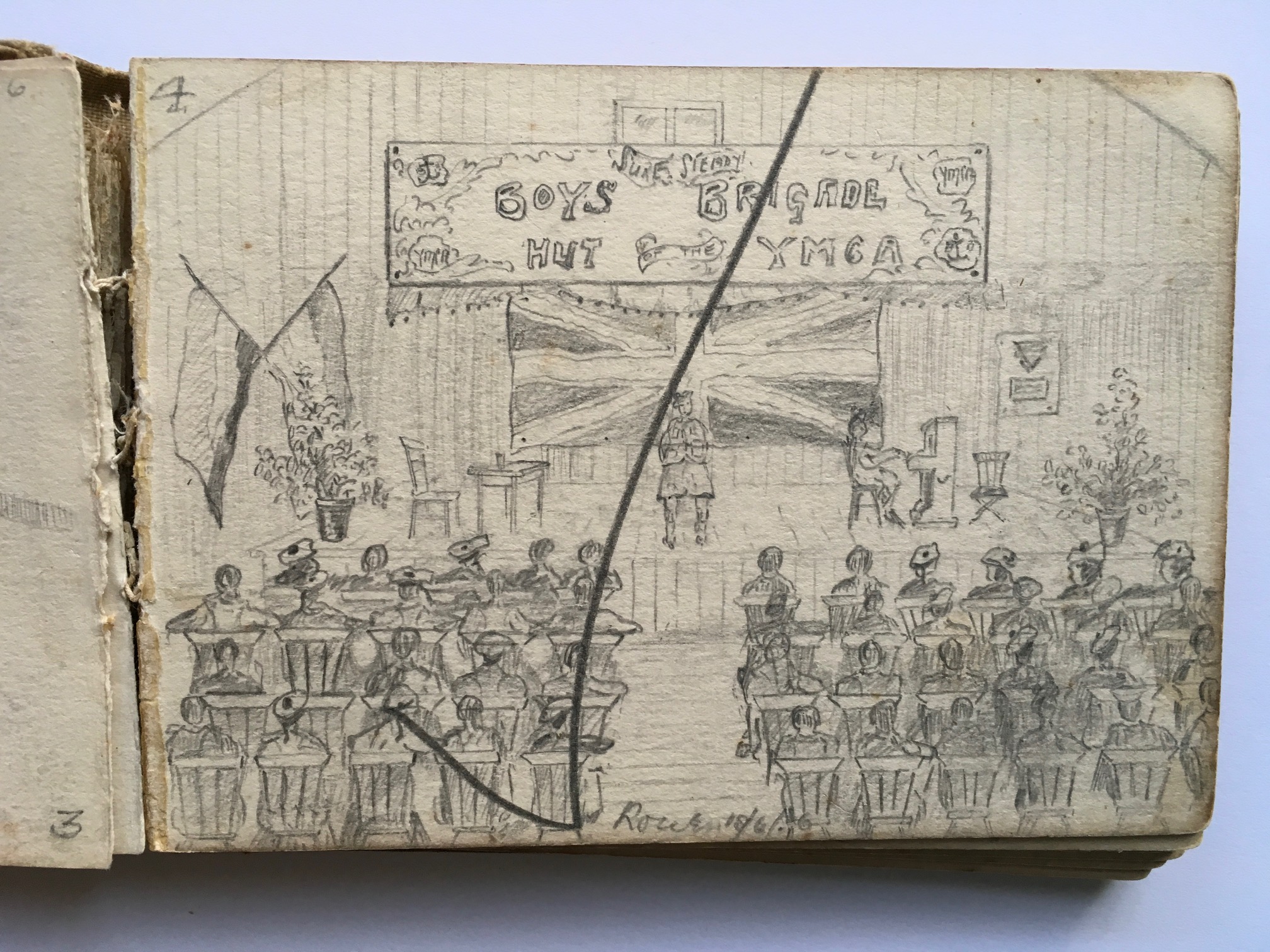The Tearles of Bexleyheath
by Hazel King
“Our” branch of the Tearle family tree descends from John Tearle, who was baptised on 23rd August 1741 in Stanbridge, Bedfordshire. On 30th October 1760, aged 19, he married Martha Archer and they had seven children between the years 1761 and 1773.
One of these children was John, who was baptised on 29th July 1770 in Stanbridge. He married Mary Janes on 14th January 1792 in Tilsworth, Bedfordshire, and in 1841 John is listed as being 70 years old and a carpenter, with his wife Mary, 65. They were living on Leighton Road, Leighton Buzzard, Bedfordshire. John died in the last quarter of 1849.
John and Mary had nine children between the years 1792 and 1817. The eldest son, Thomas, was born about 1792 in Ivinghoe Aston, Buckinghamshire and on the 6th January 1823 he married Jemima Cleaver in the church of St Mary in Aylesbury, Buckinghamshire.
Thomas and Jemima had 10 children. By the time of the 1841 Census they were living in Hockliffe, Bedfordshire with their growing family. Thomas was an agricultural labourer. By 1851 Jemima had died and Thomas was 59 and working on the land. He was left with 4 daughters still at home and his son, Jabez who was 9 and at school. The four daughters were straw plaiters, Susan (26), Ann (24), Sarah (12) and Elizabeth (6). Bedfordshire was one of the main centres for straw plaiting in England at this time. More about that later.
Thomas was still working on the land at the time of the 1861 Census. Jabez (19) was still at home and was a “farm servant” and Elizabeth was still a straw plaiter, aged 16. Thomas died in 1866 aged 75.
His son, Jabez, had been born in 1842, and on the 10th October 1862 he had married Mary Clarke, at Battlesden, Bedfordshire. Jabez was then 21. By 1871, Jabez and Mary were living on Watling Street in Hockliffe. They had three children by then, George (7), Louisa (5) and Alice (3).
By 1881, George was no longer living at home and Alice, then 13 was a straw plaiter. .James had been born by then and he was 8 and still at school. Jabez was employed for many years at “The Grounds”, a farm in Hockliffe.
Bedfordshire Archives and Record Service hold details about The Grounds, dated 1903 (ref AD 1147/98) and describe the property as “Being a farmhouse, buildings, 2 cottages, 29ac 3r.8p and a farmhouse and buildings in Hockliffe with 77ac 3r.8p plan” According to Historic England Archive, The Grounds was part of the Hockliffe Grange Estate.
As we look through the census records of 1891, 1901 and 1911, Jabez and Mary were living on their own, on Woburn Road and Jabez was still working at the age of 69.
On 3rd June 1912 Jabez died from “Cerebral Paralysis”, aged 70. His daughter, Alice (by then Alice Tucker) was the informant of the death. He is buried in the church yard in Hockliffe.
His wife Mary, was to live until she was 92. She went to live with her daughter Louisa (by then Louisa Hogkins) and died at “Fairholme”, Brackendale Avenue, Pitsea, Essex, on 3rd November 1932. She was buried at Hockliffe, presumably with Jabez on 8th November 1932. Her son George had been the informant of her death. The causes of death given were 1a Heart failure, b Bronchitis, 2 Senility. The death certificate records that there was no post mortem.
George, the eldest child of Jabez and Mary had moved from Hockliffe to Bexleyheath in Kent and by 1881 aged 18 was living on “Main Road, Southside Cottage” as a ”servant” and “gardener’s labourer” at the home of a Sarah Markham , a gardener. Actually, George and Sarah were related. Sarah had been born in 1815 to Elizabeth Ashpole and Thomas Markham. She had moved to Bexleyheath sometime before the Census was taken in 1851 with her parents. Sarah was related to George on his mother’s side of the family.
George met an Elizabeth Clark and on 29th May 1887 they married at Christ Church, Bexleyheath. The Vicar was Rev. G. Graham and Thomas Grandy and Ann Clark (Elizabeth’s mother?) were the witnesses. His occupation is listed as “Porter”. Elizabeth’s parents, Edward and Ann Clark lived a few doors away from George, at “The House Decorator’s Shop” with their family, so presumably that is how they met. No doubt the flowers for the wedding came from the nursery!
In 1891, George was 26 and an Auctioneer’s Messenger. He and Elizabeth had a daughter Grace, then aged 1. She had been born on 5th September 1889. This was my grandmother. In Kelly’s Directory of 1899, George is listed at The Nursery 115 The Broadway and by the time of the 1901 Census, Grace, then aged 11 had been joined by Flossie (9), Frank (7) and John (2). George was a florist and gardener. They were still there in 1911 and the family was complete with the arrival of Alice, who had been born in 1904. George was later to comment that Alice wasn’t planned but had come in mighty useful! (Presumably in the Nursery). Grace had left by this time and was working as a Nanny in Beckenham, Kent. George was helped in the business by Elizabeth, Flossie (19) was a housemaid and John (12), was still at school.
In 1912, George’s father Jabez died in Hockliffe, Bedfordshire.
The Nursery at 115 The Broadway had been rented and when the site was to be redeveloped and Woolworth’s built in 1929 George was paid the sum of £800 to vacate the premises. (Just over £35,532 in today’s money). The family moved to Albion Road.
George and Elizabeth moved to “Hockliffe”, 95 Woolwich Road around 1930, a house that John built, to live with John and his business partner, Arthur Barwell. Elizabeth died here on February 18 1932 and was buried in Bexleyheath Cemetery on 24th February 1932. She had breast cancer . Her death certificate records there was no post mortem.
When John built “The Grange” Broomfield Road, Bexleyheath in the mid 1930’s, George moved there with him and Arthur and continued to live there after John and Gladys were married. He died there on 27th February 1951, aged 87. His death certificate indicates pancreatic cancer and myocardial degeneration. He was buried in Bexleyheath Cemetery with Elizabeth on 5th March 1951. His grave is No. 1951. I presume the ashes of Flossie and Alice were later buried here too as their names have been added to the headstone.
Grace Tearle 1889-1968
Grace was born on the 5th September 1889 at 115, The Broadway, Bexleyheath. On leaving school she became a nanny and by 1911 she was working for a family in Beckenham, Kent. She was 21 and was working at the home of a Sydney Frederick Wright and his wife Maude. They had 3 children, Kenneth (8), Hayden (6) and Dennis (2). The family also employed a cook, Lee and a housemaid, Caroline Cook. Sydney was a Draper and they lived at 6 Hayes Way, Park Langley, Beckenham. During WW1, Grace worked in the Army Pay Corps.
Grace Tearle married Richard Withall (Dick) at Bexleyheath Congregational Church in 1918. So the Tearle name has gone from our branch of the family. Dick had lost both legs at Mons in WW1. He had already served 7 years in the 2nd Battalion Royal Welsh Fusiliers in India, before returning home and being sent to France as one of the “Old Contemptibles”. How they met, I am not sure, as Dick was born in Tilford, Surrey, so how he came to be in Bexleyheath after the war I do not know.
They lived in Ethronvi Road, Bexleyheath and later moved to “Hockliffe”, Woolwich Road when John moved to “The Grange”. Grace and Dick had two daughters, Marjorie Frances, born 7th September 1920 and Iris Joyce (always known as Joyce), born 15th September 1921. Dick was unable to work but had been trained to do basket making and as he had worked as a Nurseryman before joining up, he worked in the garden and had several greenhouses where he grew all sorts of fruit and vegetables. He and Grace were actively involved in the British Legion and Margaret believes they held garden parties to raise funds.
Marjorie and Joyce were both in the WAAF in WW2. Marjorie was a plotter and Joyce worked on Barage Balloons. Marjorie met Charles William Eyles, a Bomb Aimer with PFF during the war and they married on 28th June 1945 at Bexleyheath Congregational Church. The reception was held at Woolwich Road, Marjorie’s house.
Joyce and Marjorie both worked at Hides in Bexleyheath before the war and for John in the office of T & B Supplies Ltd after the War. Sadly Joyce died at Ramsgate, at John’s cottage from an asthma attack, on 28th March 1957. She was only 35. She had gone there for a holiday with a lady I knew as “Aunt Lil”. She had a long-term fiancé called Ron (no surname known). Marjorie and Bill had 2 daughters, Hazel Ann, born on 23rd January 1947 and Susan Janet, born 23rd July 1950.
Grace and Dick continued to live at “Hockliffe”, Woolwich Road until 1959 when Grace suffered a severe stroke. By this time we had moved to Ipswich, Suffolk, as Dad had got a job with the AWRE at Orfordness. Grace spent some time in hospital and when she was well enough to leave hospital, she and Dick came to live with us at 232 Brunswick Road, Ipswich. They lived in our front room – Grace in a single divan and Dick had a Z bed which we pulled out every night. There wasn’t room for 2 beds in the daytime. They were only able to bring a few small pieces of their furniture with them. By today’s health and safety standards, it wouldn’t be allowed, but we managed for many years while I was a teenager. Dick loved to be working in the garden and we had a greenhouse for him. At some point it became too much for Mum to manage and Grace and Dick moved into a home in Felixstowe and eventually Grace was admitted to Bythborough Hospital where she died. Her funeral was held back at the Congregational Church at Bexleyheath. She was buried in Bexleyheath Cemetery with Joyce. Dick went to live in a British Legion Home – Halsey House in Cromer, Norfolk, where he used to help out in the gardens there when he could. He died in May 1971 and was also taken back Bexleyheath for his funeral and buried along with Joyce and Grace.
Flossie (1891 – 1971)
Flossie (also known as Tot) was born on the 10th July 1891. When she left school she worked as a Parlour maid and on 4th November 1917 she married Edward West, a railway guard. They had one son, Douglas, born in June 1921. They lived at “Dougville”, 2a Abbey Road, in a house believed to be owned by her brother John. Douglas was in the RAF in WW2 and he married Joan D Tarrant in September 1948
On 23rd June 1950 they emigrated to Australia on the “Strathmore” destined initially for Adelaide.
Their UK address is given as 9 Poole Valley, Brighton; Douglas is listed as a shopkeeper and Joan as a housewife. We never saw them again. Marjorie kept in touch with him over the years and sent him Flossie’s rings when she died. Flossie died on 3rd February 1971 and was cremated. Presumably her ashes were put in her parents’ grave and her name added to the headstone. So this branch of the Tearle family has died out.
Frank (1893 – 1975)
Frank Tearle was born in Bexleyheath on 10 August 1893. After leaving school he went to work at Hides Department Store in the Outfitting Department. At the outbreak of WW1 he joined the Royal Field Artillery as a Gunner. His regimental number was 618. He went to France on 21st December 1914 and survived the War. Margaret thinks he may have gone to Malta at some point, but so far I have no evidence for this.
After the war, Frank returned to Hides and eventually became a Director there. On 20th August 1919, he married Rosa Ellen McGill, presumably at the Congregational Church, Bexleyheath. Frank and Rosa lived at 100 Latham Road, Bexleyheath, their phone number was Bexleyheath 7158!
They had 3 children, Alan, Eric and Margaret. Alan was born on 1st April 1922 and died aged 3 on 17th July 1925. Eric was born on 10th May 1927. Margaret was born on 21st February 1935. Frank was very involved in charity work, particularly through the Rotary Club and was a founding member of the Veterans Club in Bexleyheath.
As said previously, Frank worked at Hides all his working life and eventually became a Director there. I remember Eric bringing Frank and Rosa to Ipswich to see Grace and Dick when they lived with us. Frank died on 8th February 1975, and his wife Rosa died about 10 months later.
Alice (1894 – 1985)
Alice was born on 10th November 1904 and as I said before she was a mistake! A very precious mistake though. My mother Marjorie was very close to Alice and I loved going to stay with her when I was young. I remember going round Bexleyheath with Auntie Alice collecting rent from some of John’s tenants . Alice carried an old music case to put the money in! Not much thought about Health and Safety in those days.
She was obviously very useful in the Nursery when she was growing up. During WW1 John used to send her little notes and drawings while he was away. At the time of writing I do not know what Alice did when she left school she may have worked in the Nursery.
Alice married Fred Cracknell in A/M/J 1930. When I was a child, they lived at 210, Woolwich Road, Bexleyheath. Unfortunately they didn’t have any children, so again this branch of the Tearle tree has also died out. They did adopt a daughter, Sheila, who married and had 3 children. Fred worked at AWRE Aldermaston in the latter years of his working life and they moved to Wolverton near Basingstoke, where Fred eventually died after suffering from MS for a number of years. He died in 1968 (A/M/J).
Alice moved back to Bexleyheath and by July 1969 she lived at 55 Woolwich Road, a house owned by her brother John. She eventually ended up in Bexley Hospital and died, aged 80 on 2nd January 1985. Her funeral was on 10th January 1985. She was cremated and presumably her ashes were put in the grave of her parents. Her name has been added to the headstone.
Herbert John Tearle (1896 – 1960)
Herbert John Tearle (always known as John) was born at 115 The Broadway, Bexleyheath, Kent, on 16th July 1898. At the time of the 1901 Census, he was just 2yrs old.
By 1911, George and Elizabeth were both in the business. Grace had left home by then and was working as a Nanny in Beckenham, Kent. She was working for a Sydney Frederick Wright and his wife looking after their 3 children Kenneth 8, Hayden 6 and Dennis 2. Sydney was a Draper. They also employed cook and a housemaid. Flossie was 19 and working as a Housemaid, but living at home. Frank 17, was working at Hides, a departmental shop in Bexleyheath in the outfitters department. He was later to become a director of that company.
John, then aged 12 was at Upland Council School and by 1916, his headmaster was able to give him a very good reference. He left school at 14 and went to work at Hides too. In school holidays, he sometimes went to stay with relatives at The Nutley Inn in Maresfield, Sussex. There is a picture of him plucking a goose there! The Inn was run by Lewis Waters.
In the wider world, things were not good and when Arch Duke Ferdinand was assassinated by Gavrilo Princip on 24th June 1914, it triggered events leading to WW1.
There is a complementary story of his war years elsewhere on this site.
On 22nd September 1914, John enlisted as a Private in the 3rd Battalion Fusiliers (London Regiment). His number was 4201. Officially he was too young and the recruiting officer told him to “go through that door and when you come back in you will be 18”. His Short Service Card says he was 19 and he was a Draper.
He left for France on 12/13th May 1915 and went to Ypres with the British Expeditionary Force. How frightening to have been so young. He took Rowney Sketch Books with him and diaries and recorded what he saw. In the back of one were photos of Grace (his sister) and Rosa (later to marry his brother Frank). On 25th May he was wounded, “Gunshot wound to buttocks”, (actually left thigh). He was taken to No. 3 Casualty Clearing Station and then to No. 8 Ambulance Train and returned to England. He arrived in England on 26th May 1915 after only 2 weeks at the front. He was taken to Shorncliffe Military Hospital (3 miles west of Folkestone).
Later he convalesced in Deal at Sholden Lodge. He was there by 21st June as there is a picture of a cat drawn on that day! On 13th July he drew Sholden Lodge showing wounded soldiers in the grounds. John drew little sketches for Alice, then about 10, including one on the 17th December entitled “Any port in a storm” showing a soldier sitting in the open door of a grandfather clock, presumably in the Hall of Sholden Lodge and one of 115 The Broadway which also shows a gun with a cockerel perched on top (a symbol of France?).
Once recovered, John went back to France on 6th April 1916 with the B.E.F—this time with 4th Battalion Royal Fusiliers, (by then the 3rd Battalion had gone to Egypt) and his sketches in his books show something of the awful things the soldiers saw. One incident in particular stands out—the death of Private Green, Killed in K1 trench at Kemmel, Flanders on 26th April 1916 by a trench mortar. John had drawn the trench before and after the attack. By this time, he was Lance Corporal and Private Green may have been one of “his” men.
Under the sketch of the trench before the attack John has written “In memory of Pte. Green who was killed by a Trench Mortar”. Another sketch, done at home and dated 20th September 1917, shows the aftermath of war and three wooden crosses. Underneath John has written “Greater love hath no man—that he lays down his life for his friends.—From one who went in Kitchener’s first hundred thousand. Your’s etc. John Tearle late Royal Fusiliers”.
I have found out a little about Private Green. His name was Frederick Thomas Green. He was born in about 1892 in Battersea, London. He was the son of Fred and Annie H Green of 2 Balvernie Grove, Southfields, London. Fred was an engineer/fitter. Frederick had a brother, Leonard—born about 1894 and two sisters, Mavis (1896) and Helen D (1900). He was in 4th Battalion Royal Fusiliers and his regimental number was SR1525. He was killed in action on 26th April 1916. He is buried in Kemmel Chateau Military Cemetery, West-Vlaandern, Belgium. There are 1,135 Commonwealth burials there from WW1. The cemetery was designed by Sir Edwin Lutyens. In the UK Army Register of Soldiers’ Effects Frederick had £5.11.6 and a war gratuity of £7.10.0 was due. Presumably this was given to his parents.
In one of John’s sketch books, he has drawn a picture of a concert party for the troops at Rouen. The banner at the top declares “Boys Brigade Hut of the YMCA” with the motto “Sure and Steady”. These concerts were very popular for keeping up the morale of the men.
By 18th May 1916, John was suffering from shell shock and was in Etaples Hospital. “Today to my surprise I found myself in Etaples Hospital having had a relapse. Torn wire on windows”. On 25th May his diary tells us that the Dr. had marked him as “Blighty” and the Colonel had signed his papers to go home on Sunday 28th May. He arrived back in England on Monday 29th at Dover. His war record says “Napsbury Hospital” which is in Middlesex but John writes that he went from Dover to Eastbourne by train to the Red Cross Hospital at Upperton Road, Eastbourne. He records that on the Wednesday the “German Fleet was thrashed at the Battle of Jutland Bank. A great victory for us at a cost”. From his bed he could see “a wee bit of the Sussex Downs and very nice they look too”.
He seems to have done quite a bit of painting—he was in Edith Cavell ward by Thursday 8th June and he mentions a painting of a yellow boy. He mentions receiving letters from Rosa, Tot (Flossie) and Grace. He was writing back too. On Wednesday 14th June, Mr Bold (?) gave him a blanket bath and he had plenty of flowers. On 15th June the Dr told him he was sending him to “a quiet place”. He also reports on 16th that “Sister Coates stuck pin in my head”. He went to Mayfield, to Clayton VAD Hospital, Sussex on 17th June 1916. Later that week he says “Mrs (Miss) J Luckenback, the commandant is so very nice and a German lady”. He wasn’t so complimentary about the sister however—”The Sister is a cow bugger her”! Many days he was unable to write anything in his diary, but on 13th July he wrote “Speech very bad as well as my bally head” and on the next day “Am feeling absolutely fed (up). When shall I get up”.
At the time of writing I am unable to ascertain if he was ever at Napsbury. He might have been too sick to remember that he was there.
Eventually John was considered “unfit” for Military Service and was discharged from the Army on 1st June 1917. He was given a Silver War Badge (No. 192145). There is a photograph of him taken in Hastings on 8th August, wearing civilian clothes and wearing his badge. He was only 19 years and one month.
At the beginning of 1917, John had enquired about going to Art college and I think he was offered a place at the Slade. There is also a letter from the Director of The Press Art School, Percy V. Bradshaw responding to a request to “think it over”. He writes “I specially want you to join because I honestly believe that, in a short time, you will be able to do work which will be a never-ending source of pleasure to yourself and friends”. He also suggests that John could pay the fee by 10 monthly installments of 10/6d instead of five amounts of a guinea.
His sister Flossie was married on 4th November 1917 to Edward West, so it is likely that John attended this wedding.
In January 1918 John was sufficiently recovered to go to Malta as a civilian with the YMCA to work with the troops there. He traveled via Rome and Syracuse, Sicily. In an article entitled “Convalescent Camps in Malta (1915 –1919)” we read:-
“The British Red Cross Society, The Young Men’s Christian Association (YMCA), the Church Army and private individuals all co-operated to create an ambiance where the troops could relax, read newspapers, write their letters and recover their strength”.
“A series of first class concert parties brought out from England by the Red Cross and the Y.M.C.A did much to cheer the sick and convalescents throughout the island. The Y.M.C.A. had its familiar and popular tents in many of the convalescent camps and hospitals and was able to increase them as required.”
Malta had become “the nurse of the Mediterranean”. It received the sick and wounded from the Dardanelles (25 April 1915—8 Jan 1916) and from the Campaign in Salonica (5 October 1915—30 September 1918). Because of the mildness of the climate in Malta, many soldiers could be treated in the open air. Balconies and verandahs became extensions to the main wards.
I am unsure at this time of how long John spent in Malta, his sister Grace (my grandmother) married Richard Withall on 23rd April 1918 so he may not have been at their wedding, but he was back home by 20th August 1919 when he was best man at his brother Frank’s wedding to Rosa McGill (The same Rosa whose picture John had taken to the front and who had written to him). Frank had already written to Rosa “I have decided for the present that I do want you “. (1913) on a card that John had drawn. The card seems to have been sent with some long expected gloves.
After the war, John opened a florist shop at Market Place, Bexley Heath with the phone number Bexleyheath 109. He would go up to Covent Garden to get flowers and vegetables. He ran this shop until about 1932 when his mother died and he presumably rented it out to someone else to run. In “The Record” dated March 1931 his name is still on the shop and M&TJ Watney, The Woodlands, Poultry Farm were supplying him with eggs.
In 1929, the Nursery at 115 The Broadway, Market Place, Bexley Heath was sold to make way for the new Woolworth’s Store. George Tearle and those before him had only rented the premises. The lessor was a James Thomson and George had rented the Nursery from him from 14th August 1919. George was to be paid £800 to vacate the premises (just over £35,532 in today’s money). He had to dismantle all “his buildings, pipes, plant erections and premises on the land” within 21 days. The family moved to Albion Road.
At the beginning of the 1930’s, John and his friend, Arthur Barwell, bought a piece of land on the corner of Woolwich Road and Pelham Road in Bexleyheath. They traded under “John Tearle, Woolwich Road” and sold “Turves, Manure (stable or hop), Ballast, Sand, Gravel, Cement, Loam, Rockery, Burrs, Crazy Paving and Stone”. Kent was well known as a hop growing region, so there would have been plenty of waste to use as manure. John was “the office” and Arthur drove the lorry, initially. The local area was quickly becoming urbanised with the 1930’s housing boom and John and Arthur rode the crest of the wave.
On 18th February 1932, Elizabeth died. She was 66 and had cancer and a collapsed lung. His mother’s death had a profound affect on John and I’m sure on the rest of the family too. He wrote a poem “The day my mother died” which tells of the details of that day, who was there and how he felt. In 1934 he added another verse, saying he did not go to the funeral. In the obituary from the local paper there is a John Tearle but it might be someone else. Her funeral was held at Christ Church Bexleyheath and she was buried in Bexleyheath Cemetery. The vicar at the time was the Rev. J N Mallinson.
Later that year, on 3rd November, John’s grandmother, Mary Tearle, died at her daughter’s home in Pitsea, Essex, aged 92. She was the widow of Jabez Tearle and was buried in Hockliffe Bedfordshire on 8th November. The obituary doesn’t say whether John was there, but his sister, Grace, was. After Elizabeth died, as said previously John let someone else run the florist shop.
By 1934, John and Arthur had set up “Garden Supplies” from the site on Woolwich Road/Pelham Road. This was to be the forerunner of T & B Supplies. They later built two pairs of semi-detached houses on this site. John also built a house at 95 Woolwich Road. He named the house “Hockliffe” after the village in Bedfordshire where George had been born. He moved in here with his parents George and Elizabeth and Arthur Barwell. Elizabeth died there.
In 1938 John built “The Grange”, 4 Broomfield Road, Bexleyheath. According to the 1939 Register, he was living there with his father, George, Arthur Barwell and Mrs Watkins who was their housekeeper. There was also another person living there, whose record is still closed. Eric Tearle thinks that this was a Tony Chapple, Arthur Barwell’s nephew who was about the same age as Eric and was at Graham Road school with him. Eric believes his parents went and Arthur took him under his wing.
After John moved in to “The Grange”, my grandparents Richard (Dick) and Grace Withall, moved into Hockliffe with my mother, Marjorie and Joyce. When I was a child a Mr and Mrs Wykes lived with my grandparents there.
On 7th August 1940, John married Gladys Winifred Saunders at Christ Church Bexleyheath. It was a Wednesday and a half day closing! Marjorie and Joyce were the chief bridesmaids and Margaret one of the little ones. The newspaper report said it was “a wedding that attracted a great deal of attention” and that John was a “popular member of one of the old Bexleyheath Families”. John’s brother, Frank was best man. The wedding reception was held at the home of Gladys’ parents, who lived at Milton Villa, Church Road, Bexleyheath. The Rev. W H Bass M.A.B.D officiated at the marriage.
Alison Gunary says that one of her first memories was of going to John’s wedding. Her parents, Alick and Edith Beaumont were guests and Alison’s Aunt took Alison and her eldest sister to see the “Happy Couple” leaving the church.
Following the wedding, John and Gladys spent their honeymoon at the Langton Hotel Cheltenham (still there today). This was at a time when the Battle of Britain was going on. On returning from honeymoon, they lived at the Grange, with Mrs Watkins as housekeeper. In the first week back, tiles and windows at the front of the house were blown out and the second week the same at the back. A large part of the wooden fence on the Gravel Hill boundary was blown down and John had it replaced with a brick wall—bricks were then cheaper than wood! He never wanted to spend money unnecessarily!
John continued in his partnership with Arthur Barwell, forming T & B Supplies and later forming a limited company, becoming T & B Supplies Ltd. Later they added “Builders Merchants”. Eventually they owned 4 shops selling everything for the building trade except wood. They had two shops in Bexleyheath, one in Welling and one in Dartford. They also had a yard in which to store building materials.
As a child, I grew up at 150, Upper Wickham Lane and John owned the whole row of cottages, I think. In later years, Alice lived at 55, Woolwich Road, Bexleyheath and that was one of John’s houses too. He always looked after his family.
John’s business was his passion—he had a desire for independence at work and to strengthen the family for the future. In one of his business books he wrote “To strengthen the family name”. Although he was a well known local businessman, it seems he did not socialise much in Bexleyheath. In this respect he differed from his brother, Frank who was very much involved with Rotary and who helped to set up the Veterans Club in Dawson Road, Bexleyheath. However he did look after his family and provided them with homes, as he did for some of his work force as time went on. He employed various family members at T & B’s including my mother and Joyce, both in the office. As a child I remember making rubbings from the wallpaper sample books and being allowed to play with the old invoices!
At some point during WW1, a Monsieur Lambert, known as Pappy, stayed at 115 The Broadway with the Tearle family. He was from Belgium. This started a connection with the Belgians and years later, presumably after the second World War, a Willie Doumoulin from Liege stayed with the family in Bexleyheath. He made a plaster bust of George Tearle and also of John.
What happened to this bust I do not know, but from the picture, he created a very good likeness of George. We seem to remember that there was a shed at the bottom of the garden at “Hockliffe”, Woolwich Road where he made the models.
By 1956, John had purchased a cottage at 45 Hereson Road, Ramsgate in Kent. He had loved going to Ramsgate with the family in boarding houses and bought the cottage for family holidays. He liked to take Gladys and the children, in the school holidays at weekends, and leave them there, go back to work and then go back to Ramsgate to collect them again. His best friend, Harry Stewart, had married a girl from Ramsgate and this was probably how the connection was made. Unfortunately Harry’s wife Babs, was killed in WW2 by a bomb. Harry never had any children, but he was godfather to one of the boys. Harry said he regarded his friendship with John as one of the most important events of his life. Gladys described Harry as John’s truest friend.
Among our memories of childhood was one with John queuing in London to file past the coffin of George V1 in 1952 and going to Museums and Art Galleries in London. John and the boys also “discovered” All-in Wrestling by watching bouts in the Coronation Ballroom on the sea front at Ramsgate. For a couple of years after this discovery, John and one of the boys used to go to Barnhurst with a builder friend, Tony Mortimer and his son, to watch the wrestling.
David’s love of History came from his visits to Museums with John and also from a set of cigarette cards that his father had of all the Kings and Queens of England. John was a heavy smoker and presumably collected these cards from this addiction. In later years, when he was ill, he said he had been a “fool” to smoke.
Having grown up in a Nursery, John loved plants. He always wore a flower in his buttonhole and especially loved roses, growing many in the garden at “The Grange” Harry Stewart remembers going to a dance at Crayford Town Hall with John when they were young (he loved to dance) and John walked swiftly back to 115 The Broadway to cover the plants because a frost was expected. He often picked flowers from his garden and took them when he went to visit family or friends. David was told that John used to take flowers to his local pub “The Royal Albert” and the publican would say “the first one’s on me John” He usually only had that one drink! Always frugal.
John was interested in many things – We remember he liked to watch a programme called “Free Speech” which was on in the mid 1950’s when a second channel was launched and he helped out with an essay on “World Government” when one of the boys was at Bexley Grammar School. He liked antiques and had a collection of a variety of things in the room that was once George Tearle’s bedroom.
As a young man, he would occasionally drop into the Law Courts in London to see what was going on. He was a member of the British Legion for many years – probably joining after his time in WW1. He was friendly with a Mrs Baker-Beall who lived on Gravel Hill close to the Grange. She was probably head of the local British Legion and was sure he would have been a donor to the branch.
There are family memories of being on the beach at Ramsgate one night in November 1957 with John to see the much advertised emergence in the night sky of Sputnik 2, with the dog Laika on board. I remember being invited to The Grange in June 1953, with quite a number of family members to watch the Coronation of Elizabeth 2nd—we didn’t have a television at that time and we all peered at quite a small screen and watched—in black and white of course!
John was not a sportsman, but he was a good swimmer. There was an occasion at Ramsgate where he seemed to swim out much too far, but he was a strong swimmer and all was well.
When the annual Oxford v Cambridge boat race took place, John and Frances supported Cambridge and Gladys and David supported Oxford! The same thing happened in our house with Dad and I supporting Oxford and Mum and Susan supporting Cambridge!
John had two novels by his bed—one by Zane Grey (cowboy stories) and another by Edgar Wallace (a murder/mystery). He also had a New Testament and a bible belonging to George Tearle in his bedside table. John doesn’t seem to have discussed any faith that he may or may not have had but he was keen for his children to go to the Sunday School at the Congregational Church in Bexleyheath.
He had a love of Scottish Terriers—one even appears on one of his wedding photos! By the 1950’s he had a Scottie called Tessa, she was devoted to John and he often took her to the various T & B shops with him. In about 1959, Tessa had a litter of puppies and we had one of them who we called “Whisky”. John always liked to stop and chat to people and no doubt many opportunities came to John’s attention through these wide ranging conversations—for example, possible property purchases which would add to his already expanding investment portfolio. He never liked to miss a bargain!
Alison Gunary, a family friend remembers John very well, she says “he was generally regarded by my parents as almost eccentric”. I wonder what had given them that impression? She goes on to say that “John seemed to know everyone in Bexleyheath and was often seen talking on the Broadway. My mother and he would engage in friendly banter about how Mother went up in the world by marrying into the Clarke family. He didn’t get away with that!” Alison also remembers him jumping on and off buses before he had learnt to drive. Alison’s father used to say that “T&B Supplies were the only firm he dealt with who watched their half pennies on their accounts”. It seems to be a case of “look after the pennies (or half pennies in their case) and the pounds will look after themselves”.
John had wanted security for his family and his astute business acumen enabled him to provide just that after his death on 14th May 1960 at Charing Cross Hospital (now Coutt’s Bank). Family were very important to John—he had been very close to his sisters Grace, Flossie and Alice and over the years provided them all with homes. Grace and Dick lived at Hockliffe, Woolwich Road for many years until Grace had a stroke and they moved to Ipswich to live with us. Flossie and Ted lived at 2a Abbey Road and Alice in later years moved to 55 Woolwich Road—another of John’s properties.
As children, we lived at 150 Upper Wickham Lane, Welling—one of John’s houses. He would provide the materials from T & B’s and Dad would do the decorating. When he came to visit us he would park his car away from our house because if the tenants in the other houses in the row knew he was there, they would push notes under the door! When I passed the 11+ and was given a place at Dartford Grammar School it was John who paid for my uniform because presumably Mum and Dad couldn’t afford to do so, something I was unaware of at the time.
After John’s death, the family found it too difficult to work with Arthur Barwell, but in a letter written to his relative, Ted Waters, who had emigrated to Australia early in the 20th century John wrote of his “wonderful partnership” with Arthur.
In a letter to Ted in Australia, Alice wrote “Certainly still seems unbelievable that John is gone. We all miss him, everyone liked him. Like you we will all miss his letters very much, he always wrote each week, more if any special news to report. The only comfort I feel is that he was not in pain, also he would have hated to have been an invalid.”
He called Gladys his “rock” and they were married for just under 20 years. Gladys understood business and was proud to say that her husband was the “T” in T and B Supplies.
Straw plaiting
Bedfordshire was one of the main areas for straw plaiting in the late 18th and early 19th Centuries. At that time, hats were formed from lengths of straw plait and so the two industries co-existed and dominated home life for a large proportion of the inhabitants of Bedfordshire, especially women and children.
At the start of the 19th Century, many plaiting schools were established. Children were taught the basics of plaiting at home before being sent to a plait school between the ages of 3 and 4. Even younger children were capable of chipping the loose ends of straws. At least 10,000 children attended such schools in Bedfordshire during the first half of the 19th Century and as many as 13,000 during the peak of the industry in the 1890s.
The schools charged weekly fees of 2 or 3 pence and children would be expected to earn between 9 pence a week aged 8, to as much as 3 shillings a week by the age of 14. They would work at the plaits while walking around—they worked at them almost constantly.
Plaiters would often be paid more than farm labourers and domestic servants, so sometimes an employer had to pay more in order to find workers. It was said that the extra money the women earned could make the men lazy!
In our family tree, the four daughters of Jemima Cleaver and Thomas Tearle were all straw plaiters.
Richard Tearle (1794 -1887), uncle to Susan, Ann, Sarah and Elizabeth was a Straw Plait dealer and his step-daughters Lucy Sanders (14), Ruth Sanders (11), and Suzannah Sanders (8) were all straw plaiters in 1851. By 1861, Lucy (23) and Suzannah (18) had become straw hat makers. (A note here, the 1851 census lists Lucy, Ruth and Suzannah as daughters-in-law but Richard’s second wife was Ruth Sanders, so I think these were, what we would call today, his step-daughters).
One of Richard Tearle’s sons, David also became a plait dealer. By 1861 he was a straw plait dealer/grocer and by 1871 he was a grocer, and had a post office, with his father, Richard, living with him as a widower. He gradually changed his occupation with the decline of the straw plaiting industry.
Herbert John Tearle – war artist
A sketch of John’s home in Bexleyheath. The date tells the story.
Tragedy strikes. John’s grief gives way to an iconic scene of life in the trenches, and how chance can deal the cruelest blows. The detail in this picture is remarkable.
This last drawing is of a concert party for the troops in Rouen.
